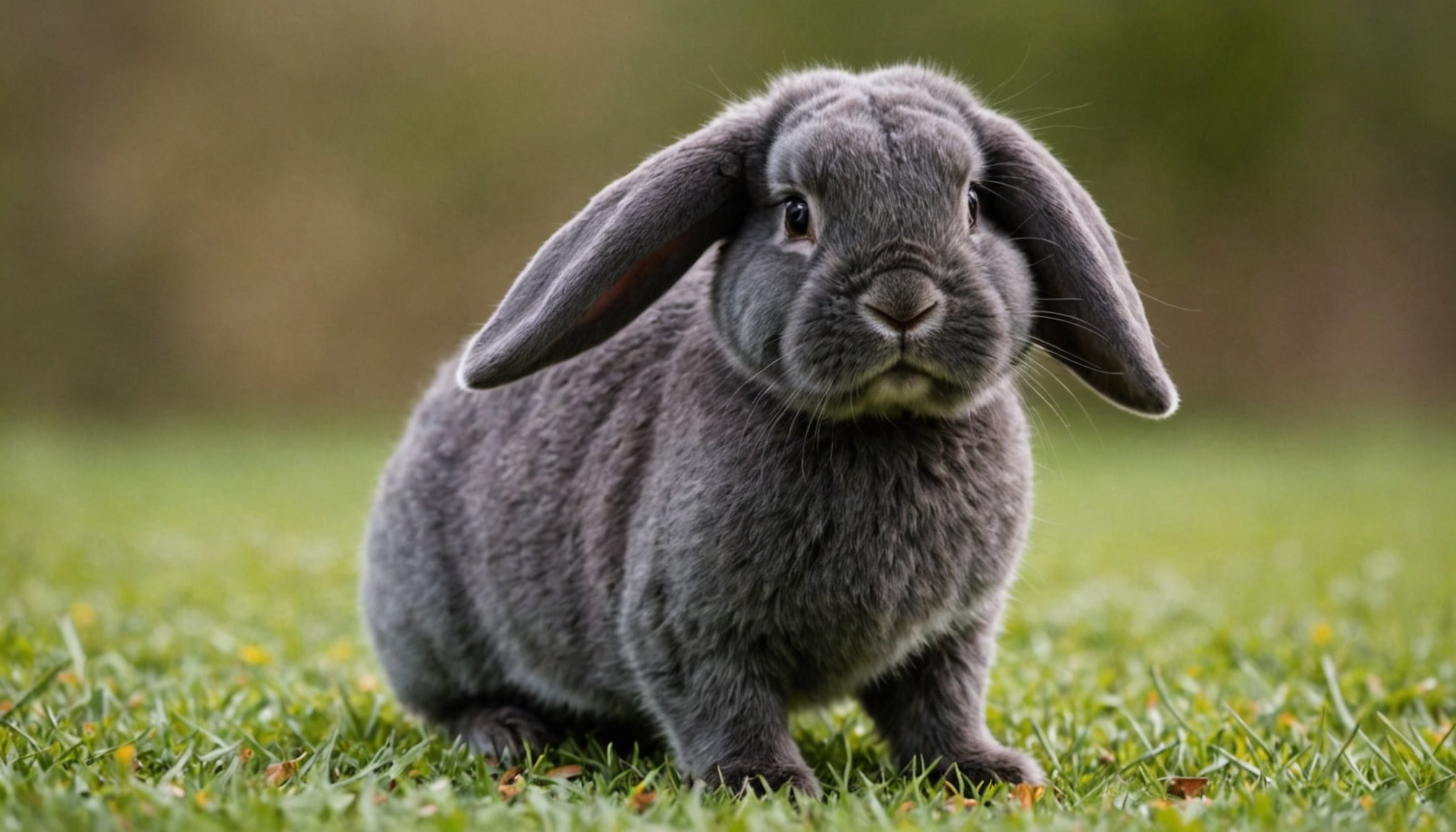Understanding Rabbit Behavior
Becoming familiar with rabbit behavior is essential for creating a positive relationship. Naturally, rabbits display a range of behaviors that reflect their well-being and social needs. Recognizing their body language provides insights into their emotions and intentions. For instance, a rabbit thumping its hind legs often indicates fear or a warning. Meanwhile, a relaxed body and purring signal contentment.
For those introducing new rabbits to their homes, it’s crucial to understand typical behavioral traits. Commonly, new rabbits might be timid as they adjust to their surroundings. Allowing them time to explore at their pace and respecting their boundaries is vital. Observing behaviors like circling or nudging provides clues about their comfort levels.
In parallel : Proven techniques to ease separation anxiety in recently adopted pets
Emphasizing socialization ensures rabbits integrate well into households. They’re naturally social animals requiring interaction with humans and other rabbits when possible. By learning their unique body language, pet owners can respond appropriately, reinforcing positive behaviors and addressing any issues early. Adequate socialization leads to trusting, affectionate relationships, making life enjoyable for both the rabbit and their human companion.
Creating a Positive Environment
Designing a rabbit habitat that caters to their natural instincts is crucial to their well-being. To begin with, a rabbit’s environment must be a safe space where they feel secure from potential threats. It should include a comfortable hiding place, essential for mitigating stress and providing retreat during overwhelming moments. Moreover, the habitat should allow ample room for rabbits to hop and explore without constraints, as sufficient space is essential to their physical and emotional health.
Additional reading : Proven techniques to ease separation anxiety in recently adopted pets
Introducing environmental enrichment is key to fostering mental stimulation. Varied textures, chew toys, and tunnels contribute to a stimulating rabbit habitat. Rotate these features regularly to encourage curiosity and prevent boredom. Furthermore, observe the rabbit’s preferences—expanding on activities that elicit enthusiasm and engagement enhances enrichment efforts.
Space and territory hold significant importance, as rabbits are territorial by nature. Providing separate zones for sleeping, eating, and playing within their enclosure can enhance contentment and reduce territorial disputes. Environmental enrichment isn’t just about physical objects—it also includes opportunities for social interaction and exploring beyond their immediate habitat under supervision. This multifaceted approach to creating a safe and stimulating habitat fosters a balanced, joyful existence for rabbits.
Essential Socialization Techniques
Creating a strong bond with your rabbit begins with the right socialization techniques. Initiating interactions requires a careful step-by-step approach. Begin by allowing your rabbit to become accustomed to your presence. Sit quietly nearby, allowing them to explore you on their own terms. Simple actions like offering a treat can begin building trust.
Patience and consistency are vital in the bonding process. It’s important for rabbits to feel safe and unpressured. Repeat gentle interactions daily to solidify this connection. Learn to interpret their signals, such as a gentle nudge indicating curiosity or playfulness. Gradual desensitization through regular, controlled exposure to sounds, sights, and experiences helps foster a more relaxed rabbit, reducing anxiety over time.
As trust builds, implement trust-building techniques such as hand-feeding or interactive play to deepen your relationship. Be mindful of your rabbit’s unique personality and comfort zones, adjusting interactions as needed. Remember, a gradual approach ensures a foundation of trust, paving the way for a fulfilling partnership. With patience, your rabbit will grow more confident and affectionate, enhancing your shared experience.
Fun Activities for Bonding
To foster a deeper connection with your rabbit, engaging in bonding activities can be both enjoyable and beneficial. Interactive play is a cornerstone of this process, offering physical exercise and mental stimulation while strengthening your bond.
Start with simple activities like interactive games. Encourage your rabbit to chase and nudge a ball or explore a treat puzzle. This not only satisfies their curiosity, it also supports their emotional well-being.
Creative rabbit enrichment projects can further enhance your shared experiences. Consider DIY projects using household items: tunnels made from cardboard boxes or treat dispensers crafted from paper towel rolls. These efforts promote a stimulating environment and mutual enjoyment.
Incorporate playtime benefits into your routine. Regular activities reduce boredom and stress, leading to a happier rabbit. Engage them in activities that cater to their instincts, such as digging, which can be accommodated using a safe digging box filled with shredded paper.
Remember, variety keeps bonding activities exciting. Rotate games and challenges to maintain curiosity. Engaging your rabbit in diverse activities supports their health and deepens your relationship, transforming daily interactions into meaningful moments of fun and connection.
Common Challenges and Solutions
Owning rabbits can be rewarding, yet it comes with its set of rabbit behavior issues. Recognising these challenges is the first step towards effective solutions. Stress and anxiety are common in rabbits, often stemming from sudden changes or lack of socialization. Identifiable through signs like excessive hiding or aggression, these issues require a structured approach for resolution.
You can reduce stress by ensuring a stable environment and implementing consistent handling techniques. Approach gently, speaking softly to reassure them. Incorporating effective solutions such as creating a calming routine, gradually introducing new stimuli, and providing safe spaces can ease anxiety.
Persistent behavioral problems might indicate deeper issues needing long-term strategies. Strategies include creating a zen-like safe space and implementing environmental enrichment to distract and calm. Separation from stressful situations and professional guidance offer additional support.
Addressing these issues promptly ensures your rabbit’s well-being and strengthens your bond. Therefore, understanding rabbit behavior enables you to navigate these challenges effectively and improve your pet’s quality of life. Remember, patience and tailored approaches are key in fostering a harmonious relationship.
Insights on Rabbit Care and Emotional Health
Understanding the importance of comprehensive rabbit care ensures a harmonious life for both the pet and owner. A well-balanced diet is the foundation of a rabbit’s emotional well-being and must include fresh hay, leafy greens, and the occasional fruit treat to ensure all nutritional needs are met. This prevents potential health issues such as dental or digestive problems.
Regular veterinary check-ups are crucial to maintaining a healthy lifestyle. These visits help in early identification of potential problems, enhancing your rabbit’s longevity and quality of life. Vets can guide vaccination schedules and advise on diet adjustments, ensuring your pet’s optimal health.
Recognising signs of emotional distress is equally important. Rabbits under stress may exhibit lethargy, aggressive behavior, or changes in appetite. When these signs are noticeable, providing a calm, comforting environment can help in recovery. Observing their body language and habits assists in addressing their needs effectively.
Remember, fostering both physical and emotional health in rabbits requires a multi-faceted approach. The integration of proper care, regular vet visits, and attentiveness to emotional cues forms the cornerstone of a thriving rabbit companionship.
Visual Aids and Resources
Utilising infographics can be tremendously beneficial for those looking to understand rabbit care quickly. These visual tools offer concise, at-a-glance information on topics such as dietary needs, common health issues, and rabbit behavior signals. Compiling infographics on various subjects like safe habitat setups or effective socialization tips empowers pet owners by providing immediate answers and guidance.
Creating comprehensive checklists ensures efficient management of your rabbit’s care and ongoing bonding activities. These may include daily feeding routines, playtime schedules, and essential grooming rituals. A set checklist helps maintain consistency in care, reducing the risk of neglecting important tasks which can impact their physical and emotional well-being.
For those seeking deeper insight, a variety of additional resources including reputable books, online forums, and specialised websites offer extensive information on rabbit care. Many provide a wealth of knowledge on environmental enrichment, health tips, and behaviour management techniques. Leveraging these resources builds confidence in owners, equipping them with practical advice and real-world insights to address challenges.
In essence, using these visual aids and resources supports pet owners in providing holistic care, ensuring happier and healthier life for their rabbits.











